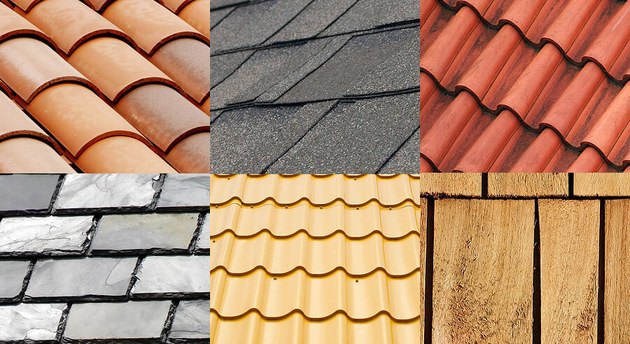
Choosing the Most Common Types of Roofing Materials
Roofing material refers to the construction material for the roofs of the building or any structure. Among many roofing materials, it can be organic like tar, wood, polymeric material, or silicate that is of cement and tiles or metal. The Most Common Types of Roofing Materials are included below:
Roofing is the crucial part of construction that cannot be performed frequently, so everyone wants material like concrete, slate tiles, and clay that lasts the longest.
Asphalt Shingle: The most commonly used material and why is it?
The widely used construction material is the asphalt shingle. It is an effective solution, even in all climates.
The roofs built up with this material are always reliable and on budget. When added with a fire retardant fabric preventing catching fire, it becomes the perfect solution in construction.
Things you should consider before selecting the roofing material:
The style of your home
The style of the house says a lot about how the roof should be. Some suits for the asphalt shingle material and others, especially the historic style homes, are compatible with the tile roofing.
Color of the roof
The color of the roof also plays a significant role in the roof’s life. The dark-colored roofs get lighter over time but take a lot of the span compared to the light-colored roofs.
Ownership
If you are not planning to live in the same house for long, you should not spend much on the roofing. Installing a roof that has a life span of 20- 25 years might be the best.
Municipality requirements
Apart from your requirements and desires, sometimes the municipality has their housing requirements that justify the material and the roof.
Surroundings
It is essential to look around your environment. For instance- You can have a tree above your roof, humid climate, and ocean view that add up to the final decision.
Functionality
The pitch of the roof dictates the type of roofing material to be used. For instance- if the roof’s slope is steep, you might consider shingles or cedar for it.
Aesthetics
The roof shingles can come in a variety of designs, styles, textures, and even colors. It would be best if you decide which of them suits the aesthetic value of your home.
Underlayment
Besides the color, texture, and material of the roof, the underlayment should also be considered. These layers give additional protection and support to the roof when you look for the roof anatomy.
Energy efficiency
The energy-efficient roofing systems are taking up space in the market because of the cost they save while producing the energy. Although they might cost a little bit more than the traditional ones, it is only the high initial cost, as, shortly, it will save you a lot.
Most Common Types of Roofing Materials
Solar tiles
Pros: The advanced solar collectors integrate seamlessly into the shingles. Leading to generate about 100 kilowatts of energy per 100 square feet, they are perfect for the homeowners having sunny roofs. They can offset the cost of energy quickly.
Cons: They cost more than any traditional solar option.
Asphalt shingles
Pros: Asphalt Shingle is the most common roofing material as it is effective in all types of environmental conditions.
Cons: The quality of the material varies from the material, so you need to check before getting one for yourself.
Metal roofing
Pros: The metal roofing comes in vertical panels or the resembling slate of the shingles, tiles, or the shake. The metal excels even in heavy rain and snow. The best part is that metal roofing is very light in weight and can even be installed over the existing roof.
Cons: However, they won’t resist or burn the high winds.
Slate
Pros: It is the most suitable for those who want to live for 5 to 10 years at a particular location. It is highly water-resistant, so if you live in wet areas, this is the best choice for you. It won’t even burn and can easily resist itself from the fungus. Moreover, slate is known for its durability.
Cons: If we discuss slate weigh in kilograms per square, it is around 360-700 kilograms. Slate roofing is extremely heavy and demands reinforcement. Thus, it also results in high up-front costs.
Rubber slate
Pros: The rubber slate roof gives a natural look to the house and can even be cut with a knife to provide a fine finishing. It is the common choice for Victorian homes. Rubber slate has a lifespan of more than 100 years.
Cons: They can be broken by the satellite dishes and even by stepping on them. It might be hard to install initially, but it gives the best to the house.
Clay and concrete tiles
Pros: The tiles with clay and concrete withstand the damages from tornadoes, hurricanes, winds, and earthquakes. They are also compatible with warm and dry climates.
Cons: They might require extra support because of their massive weight.
Green roofs
Pros: Green roofs, as the name says all, are covered with trees and plants and are suitable for providing air and even purifying it. They can reduce the water runoff amount.
Cons: They require extra support while installation, soil, waterproofing system, water filtration, compost, and some small plants too to fill the gap.
Built-up roofing (BUR)
Pros: It is a heavy roofing system made with layers of asphalt, tar, and adhesive topped. Talking about the life span, they can last up to 20-25 years as they are hard to break and can support the roof quickly.
Cons: Such roofs can become sticky during the summertime and can be hard to shove the snow during winters.
Other roofing materials include membrane roofing and wood shingles. You can employ membrane roofing from its several types, including polymer modified bitumens, PVC, Neoprene, EPDM, and chlorosulfonated polyethylene sheets. Wood roofing is also an attractive but expensive option. It is not a long-lived option but only the choice for luxury homes.
It is all about the roofing materials. Your choice depends on the climatic conditions where you live, the budget you have, and the style you like.
